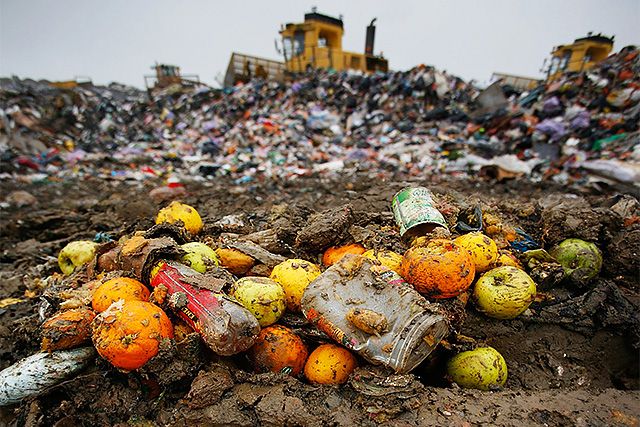It all ADs up: Food waste and landfill sites
In the UK, it is estimated that 10 million tonnes of food and drink waste arises post-farmgate each year, 60% of which could have been avoided. Although actions have led to a reduction of 1.6 million tonnes in the UK’s annual food waste arisings, there is much more to do. Without further intervention, experts are predicting that food waste may increase by 1.1 million tonnes annually by 2025.
Currently, 40% of food waste is dumped on landfill sites. The avoidable food waste generates 19 million tonnes of greenhouse gases over its lifetime – and preventing that pollution would be equivalent to taking one in four cars off UK roads. Dumping food waste releases enormous amounts of methane, which could have been easily captured and recycled through an anaerobic digestion plant. Methane is a heavy polluting greenhouse gas, having over 21 times the effect of an equivalent amount of C02.
How can anaerobic digestion help?
The process of anaerobic digestion provides a source of renewable energy, since the food waste is broken down to produce biogas (a mixture of methane and carbon dioxide), which is suitable for energy production. The biogas can be used to generate electricity and heat. Food waste has three times the methane production potential as biosolids.
A further by-product of the process is bio-fertiliser, which is rich in nutrients such as nitrogen, phosphorus and other elements required for healthy plant growth and fertile soil.
We know the damaging effects that methane pollution can have on our environment, especially through unnecessary food waste in landfill sites. This has been reflected in the rising cost of landfill taxes year on year by £8 per tonne since 1996. It now stands at £84 per tonne.
More still needs to be done. Especially, as the government missed its 2017 food waste goals, with 7.3 million tonnes of food waste being dumped in landfills last year alone. AD can really help make a significant difference. Currently, there are 107 dedicated AD waste plants in the UK, with a capacity to process 5 million tonnes of food waste. This would generate 1.1TWh per annum of renewable electricity and give a 4 million tonnes return of low carbon bio-fertiliser for UK fields. Despite the clear benefits, AD bio-collectors have reported that the AD waste plants are operating at only 50% capacity. The UK has a huge capacity ready and waiting, but it is not being fully utilised.
We’re running out of space at landfill sites, if we carry on filling them at 2016 rates then by 2023 they’ll be full. AD is practical, feasible and beneficial solution that needs to be implemented now.

